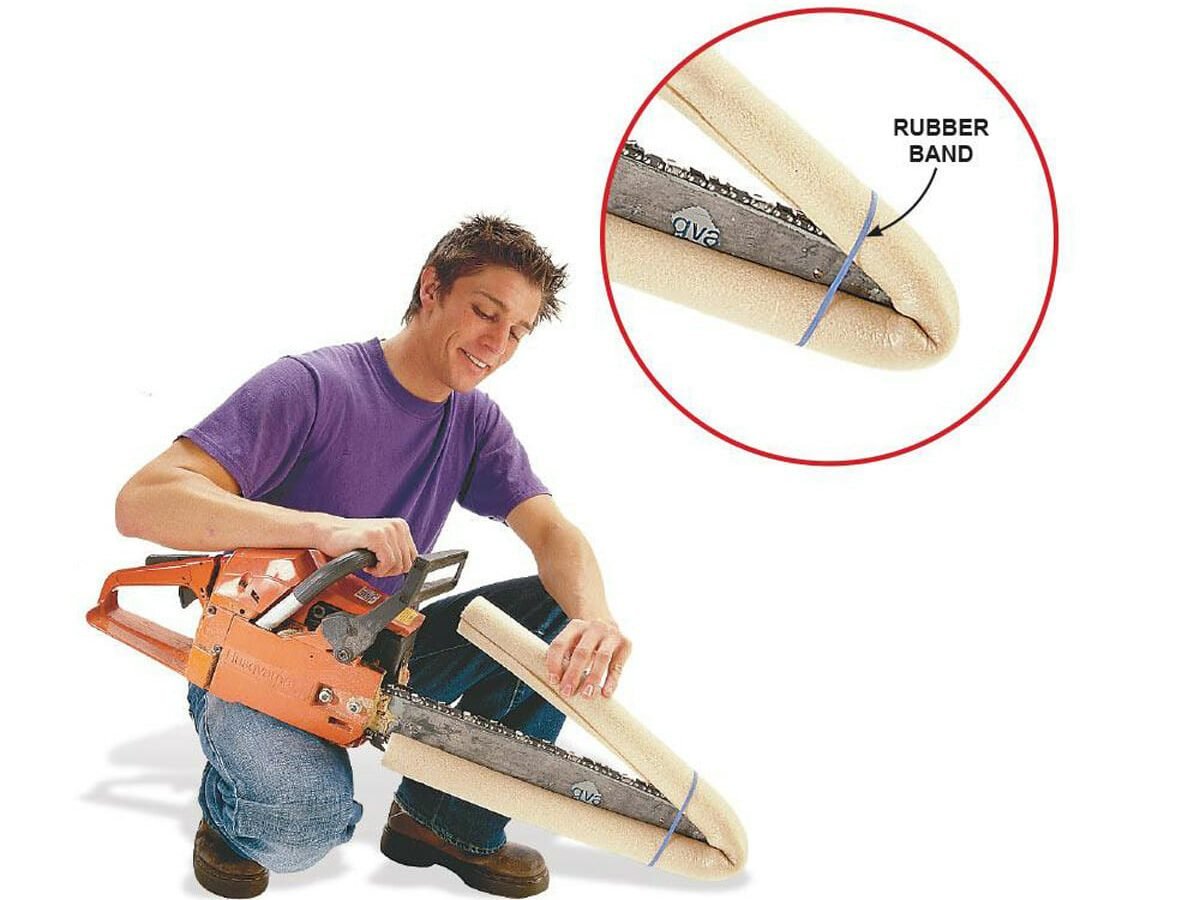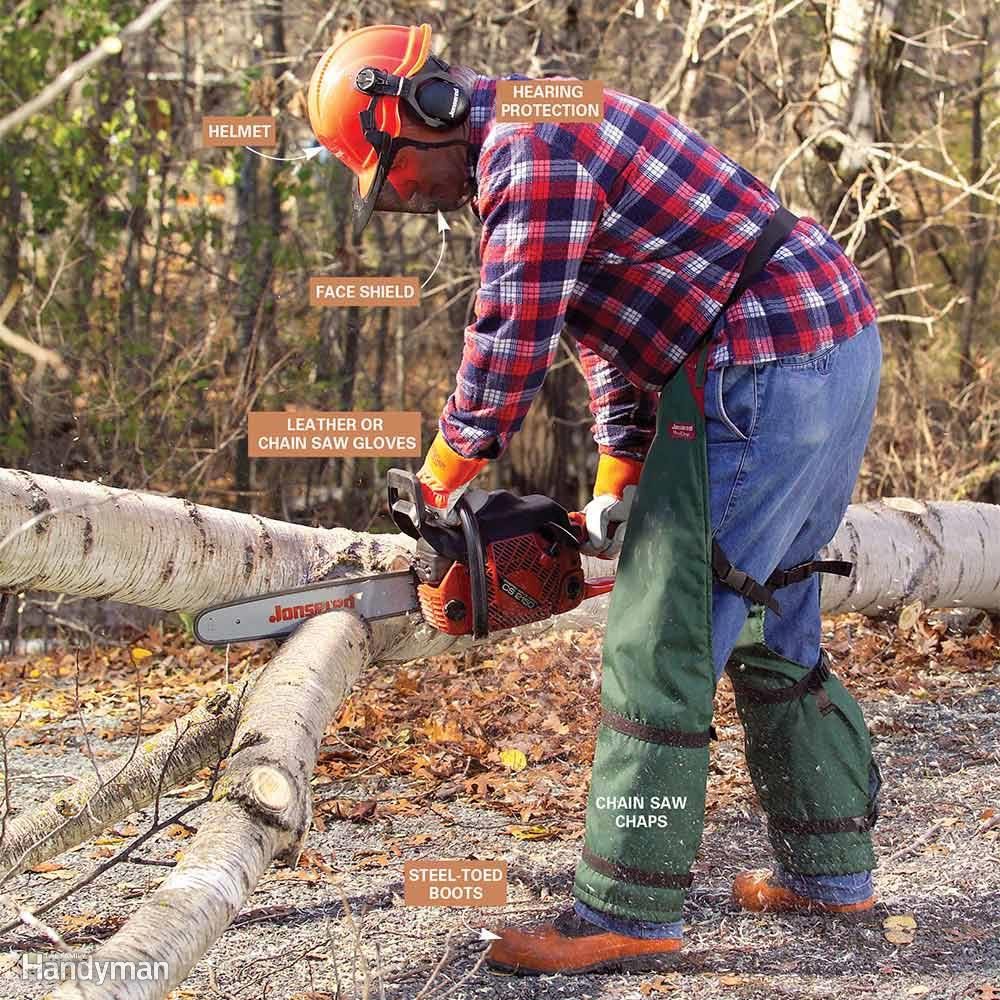
Chain Saw Blade Guard

Avoid the Kickback Zone
Cutting with the chain on the bottom of the bar is the most common and natural-feeling way to cut. The saw pulls slightly and is easy to control by maintaining a firm grip. Cutting from the underside of a branch requires you to cut with the top of the bar. This is a little unnerving at first because the saw pushes toward you. But it's safe as long as you're well braced and follow all other precautions.
However, there's one spot on the bar that you should carefully avoid. This spot, called the kickback zone, is the top half of the bar's tip. If the kickback zone comes in contact with something while the chain is moving, the saw will kick up and back toward you. That's why modern chain saws are equipped with a chain brake designed to stop the chain if a kickback occurs. It's also the reason you should always maintain an encircling grip with your thumb around the front handle. But the best defense is to avoid the kickback zone.
Psst! Don’t like bulky power tools? Try the Saker mini chainsaw.

How to Know When it's Time to Sharpen

Prevent Injuries
The most common chain saw injuries to the thigh and left arm can be virtually eliminated with just a two simple precautions.
- First, always wrap the thumb of your left hand around the front handle while you're cutting. This encircling grip keeps the saw under control in the event of a kickback.
- Second, when you move from place to place with the saw running, even if it's only to the next branch, always remove your right hand from the back handle and carry the saw at your side with your left hand holding the front handle. Then if you trip or stumble, there's no way the saw's engine can accelerate and start the chain spinning.

Wear the Right Safety Gear
Buy safety gear and wear it. Special chaps will often stop a moving chain and save your thigh. A helmet with a face screen and ear protection is a convenient way to keep head, eye and ear protection handy in one comfortable package. Wear steel-toed, cut-resistant boots and a long-sleeved shirt to protect against the inevitable scratches.

Chain Saw Sharpening Made Easier
When you're sharpening your chain saw, it's easy to get confused about which teeth you've sharpened and which ones you haven't as you pull the chain around the bar. To prevent confusion, just mark each tooth with a permanent marker after you've sharpened it.

Treat Gasoline When You Buy It
You know how much the average small-engine repair costs? We don't either, but it's a lot! And a huge source of revenue for small-engine repair shops is fixes to engines that were operated with old gas. Modern gas formulations just don't last as long as earlier ones did. And when gas starts to break down, it not only makes the engine hard to start but also gunks up the whole system with gum and varnish.
So if you keep gas on hand to run your chain saw, treat the gas with a stabilizer right after you buy it. That'll save you big money on repair bills later.

Bike Gloves for Power Tools
The gel-filled gloves that bicyclists use are great for absorbing the vibration of power tools such as chain saws, sanders and lawn mowers.
Photo: Aero Tech Designs, Inc.

Gas Tank Leak Stopper
